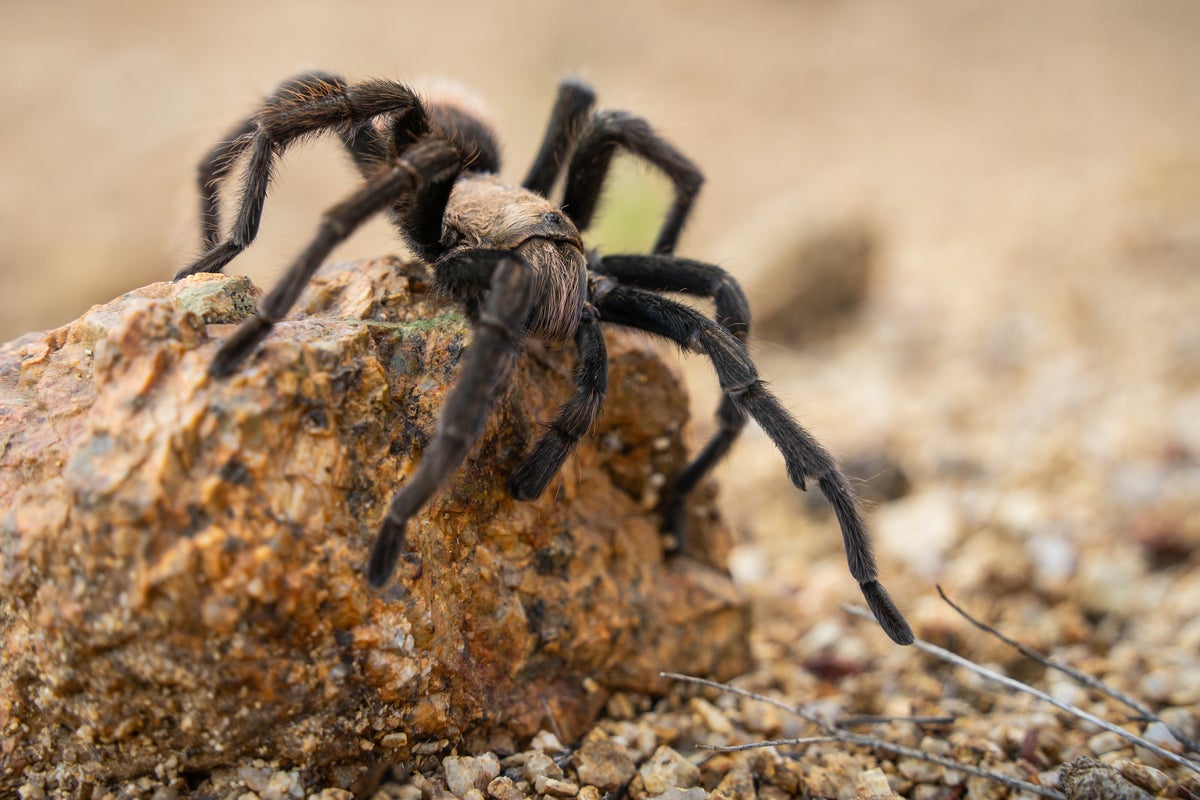
Tens of thousands of tarantulas are starting to make their way above ground, in search of fuzzy love. But while that sounds like an arachnophobe’s worst nightmare, scientists say it’s not as scary as you might think.
The annual mating season for the world’s largest spiders is already under way in the Southwest, as high spring temperatures and moisture drive the hungry creatures out of their underground burrows.
Texas is in full-flung mating season, the Austin American-Statesman reports, with tarantulas popping up in South Texas grasslands and deserts.
“It’s kind of shocking to people that may have never experienced it because most have not seen a tarantula before — even if they have lived in that area most of their life (they’re pretty secretive),” University of Idaho Associate Professor Dr. Chris Hamilton told The Independent.
Starting in October and through November, California, Colorado, Kansas, Oklahoma, Arizona, and New Mexico can also expect an influx of eight-legged friends. In Colorado, where tarantulas are a major attraction, the municipality of La Junta tells people to try to see them an hour before dusk during mid-September to October around the Comanche National Grassland.
Sometimes people catch them trekking across roads and highways. “We’ve counted as many as 50 [tarantulas] in an hour and a half. That’s pretty substantial,” Lyn Neve, a National Forest Service employee, told Denver 7 last year.
But while you might see a so-called “clutter” of tarantulas in these states, particularly near grasslands, it won’t come close to the Fifties cult film “Tarantula.” which saw a house-sized arachnid terrorize an Arizona town.
Of the 29 tarantula species in the U.S., most only reach around 4.5 inches in diameter. And those who appear above ground are normally males as female tarantulas are “basically homebodies,” says the National Park Service. Males may live as many as 10 years, but females can live for up to a quarter of a century.
For the males, the journey to find a mate is no picnic. While they typically only travel about a mile to a female’s burrow in that time many are eaten by snakes, owls or foxes, or run over by cars. Others will die of exhaustion or the inability to shed their skin.
“It makes me feel bad for the little dudes,” Cristi Painter, a wildlife biologist with the National Forest Service, also told Denver 7. “You know, he just wants a girlfriend and hopefully one that doesn’t eat him. And if she doesn’t, he’s going to die anyway.”
If you do want to see the spiders, the best time to see them in summer is in the middle of the night.
But, just don’t get too close: Tarantulas are not known to bite, but it doesn’t mean that they can’t. Their bite is comparable to a bee sting which usually only has a mild effect on humans, although some people may have a more severe allergic reaction.
“They can be grumpy when handled roughly, but if they bite, it’s typically from being provoked,” Wizzie Brown, Texas A&M AgriLife Extension Service entomology specialist, explained in a statement. “So, look at them and appreciate them because they are beneficial. But people shouldn’t handle tarantulas in the wild.”
